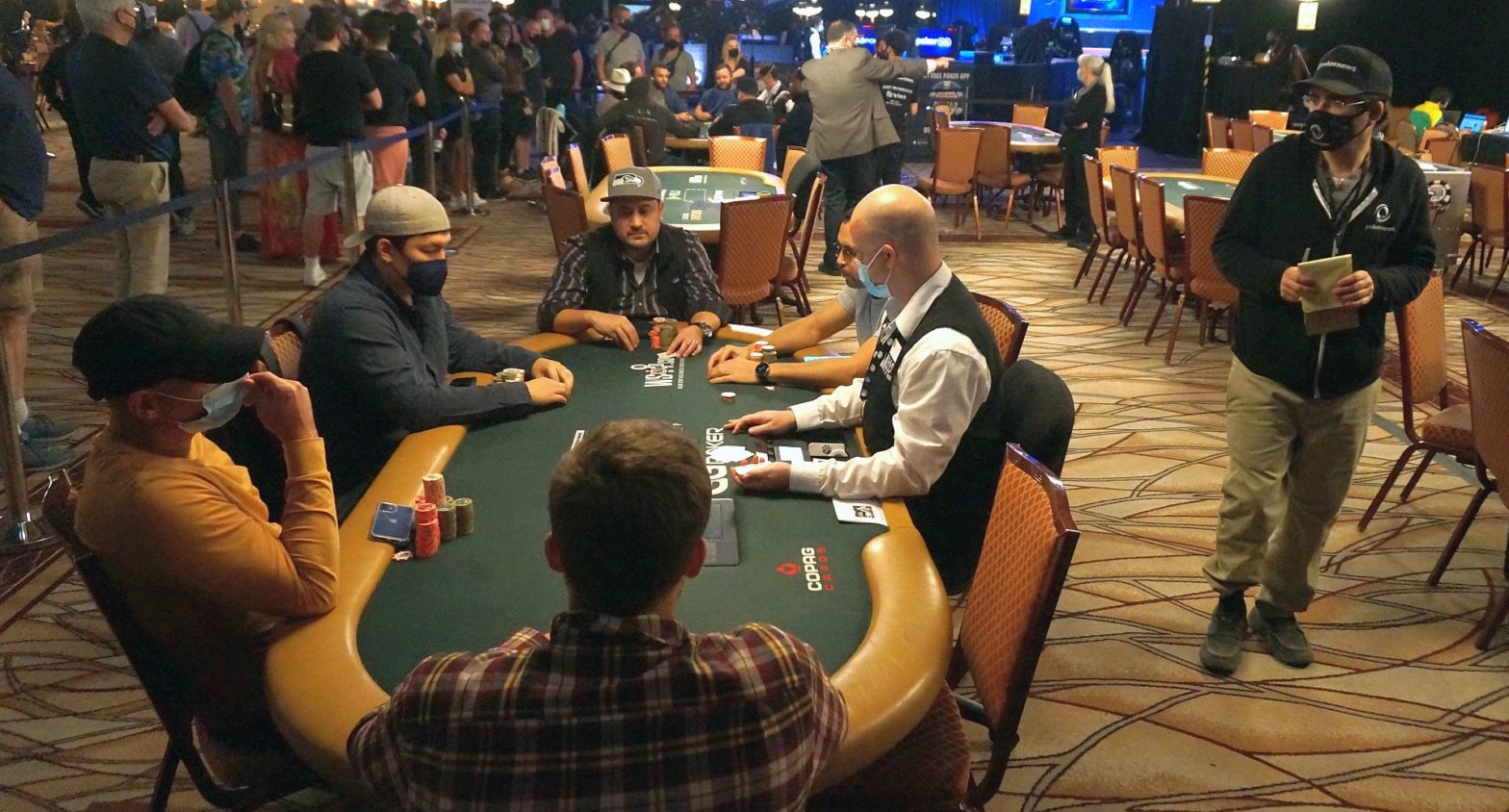We’re part way through the latest rendition of the World Series of Poker Main Event, and few things have changed. With a final turnout of 6,650 players, the Main Event exceeded expectations, including mine. I never thought it would get to 6,000, but the just-in-time relaxation of the United States’ international travel rules regarding COVID-19 allowed several hundred more players — especially Europeans — to cross the Atlantic without having to endure a 14-day quarantine period somewhere along the way.
So that’s all good. A lot of WSOP events earlier in the series were off by 30% or more. The extra influx of international players has cut that nearly in half, to the 15-20% range in recent events.
There’s one thing about the Main Event, however, that continues to stir controversy and draw criticism, and that’s the way the WSOP has adjusted the Main Event payouts for marketing purposes. The strangest skewing occurs at the very top, and while some of this has been going on for many years, it’s more pronounced than ever in 2021.
Here’s a look at the 2021 WSOP Main Event final-table payouts, plus a few more spots:
1st – $8,000,000
2nd – $4,300,000
3rd – $3,000,000
4th – $2,300,000
5th – $1,800,000
6th – $1,400,000
7th – $1,225,000
8th – $1,100,000
9th – $1,000,000
10th-11th – $585,000
12th-13th – $470,000
14th-15th – $380,050
There are some unusual jumps in there at the very least, and they’re attributable entirely to marketing concerns. For several years now, the WSOP has been hung up on the notion that all nine players who make the official final table have to be paid at least a million dollars each. Due to some shifting in payout amounts, that creates some very strange gaps.
The jump from 10th place’s $585,000 to ninth place’s $1 million is $415,000, which is just exceptional. And the jump from ninth all the way up to sixth is just $400,000. I cannot think of another instance where there’s been such a heavy difference between making or missing the final table.
As several players and commenters have noted, it’s likely to translate into super-tight play on the official final-table bubble, especially if many of the stacks are tightly bunched. And if there’s a dominant chip leader, expect to see lap after lap of bubble bullying.
Of course, once the final table is set, all of a sudden the next three jumps are relatively minimal. That should translate into plenty of action, even more so if those stacks have been trimmed a bit due to earlier tight play.
A lot of players have commented that in order to pay each finalist a million or more, a lot of dollars had to be scraped from the middle spots. That doesn’t seem to be entirely true. Here, it’s the eventual second- through seventh-place finishers who have had their ultimate payouts trimmed. Some of that trimming also helped boost up the top spot to that nice round $8 million in a year when the actual attendance should have dictated a $7 million or $7.5 million winner’s prize instead.
Image is everything, the saying goes.
I wanted to look for some historical precedent to get a feel for just how much the payouts have been skewed. One of the closest comparisons I could find occurred in 2016, when Qui Nguyen topped a very comparable 6,737-player field and won $8,005,310.
Here’s a look at the 2016 WSOP Main Event final-table payouts, plus those same extra spots. And the 2021 amounts are now in parentheses:
1st – $8,005,310 ($8,000,000)
2nd – $4,661,228 ($4,300,000)
3rd – $3,453,035 ($3,000,000)
4th – $2,576,003 ($2,300,000)
5th – $1,935,288 ($1,800,000)
6th – $1,464,258 ($1,400,000)
7th – $1,250,190 ($1,225,000)
8th – $1,100,076 ($1,100,000)
9th – $1,000,000 ($1,000,000)
10th-11th – $650,000 ($585,000)
12th-13th – $427,930 ($470,000)
14th-15th – $427,930 ($380,050)
Except for a little bit taken from 10th and 11th spots, it’s not the middle payout tiers that are funding the “everyone’s a millionaire” approach to the Main Event final table. Instead, it’s spots two through seven.
The WSOP views the Main Event as its marketing horse, and it’s every bit of that. So it’s always interesting to see how these competing interests play out. The series wants to stay as close as possible to a normal payout distribution curve while also meeting certain marketing ideals.
Several years ago, for instance, the WSOP decided it was better for business if the top 15% of players cashed in any tournament, and a min-cash was worth roughly 1.5 times the original buy-in. That holds true in the 2021 Main. A min-cash was again worth $15,000. And 6,650 entrants times 15% = 997.5, which means that technically, 998 spots should have been paid, or 999 if you’re figuring it as a multiple of nine-player tables. For marketing purposes, that was rounded up to a nice round 1,000.
The Main Event is the only event on the WSOP where the powers that be don’t adhere strictly to the program that spits out the payout structure. In any other event, you’d end with some gobbledygook like $7,891,337 for a winner’s prize, and it would just be cranked through that way. In the Main Event, though, that computer-generated structure is just a starting point. Then it goes to the brass, who make all those little adjustments with those marketing and image goals in mind.

